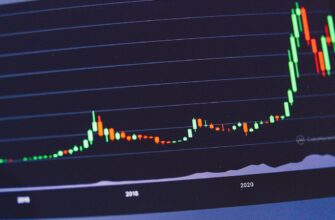## IntroductionnLiquidity mining with Ethereum (ETH) has revolutionized decentralized finance (DeFi), allowing users to earn passive income by providing liquidity to trading pools. This comprehensive guide demystifies how to liquidity mine ETH effectively, covering setup, strategies, and risk management. Whether you’re a crypto novice or a seasoned investor, you’ll learn to navigate this lucrative opportunity step by step.nn## What is Liquidity Mining?nLiquidity mining, or yield farming, involves depositing crypto assets into DeFi protocols to facilitate trading. In return, providers earn rewards—often in governance tokens or trading fees. For ETH liquidity mining, you typically pair ETH with another token (e.g., USDC or DAI) in a liquidity pool. This creates market depth for decentralized exchanges like Uniswap or SushiSwap, while you accumulate yields based on pool activity.nn## Why Mine Liquidity with ETH?nETH is ideal for liquidity mining due to its:n- **Ubiquity**: ETH pairs dominate DeFi, ensuring high demand and volume.n- **Reward Potential**: Top pools offer 5-20% APY, plus bonus tokens.n- **Ecosystem Trust**: Ethereum’s established network reduces counterparty risk.n- **Flexibility**: Easily pivot between pools as market conditions shift.nn## How to Liquidity Mine ETH: Step-by-StepnFollow this beginner-friendly process:nn1. **Set Up a Wallet**: Install MetaMask or Trust Wallet. Fund it with ETH for gas fees and your initial deposit.n2. **Choose a DEX**: Select a platform like Uniswap V3 or Balancer. Research pool APYs and token pairs.n3. **Pair Your ETH**: Deposit equal values of ETH and a paired asset (e.g., ETH/USDC). This creates LP (Liquidity Provider) tokens.n4. **Stake LP Tokens**: Move tokens to a mining platform (e.g., Yearn Finance) to start earning rewards.n5. **Monitor & Compound**: Track yields weekly. Reinvest rewards to maximize returns.nn## Best Practices for ETH Liquidity MiningnOptimize your strategy with these tips:n- **Diversify Pools**: Spread ETH across stablecoin & volatile asset pairs to balance risk.n- **Calculate Impermanent Loss**: Use tools like IL.watch to assess potential losses if paired assets diverge in price.n- **Prioritize Security**: Only use audited protocols (check CertiK or DeFiLlama).n- **Time Your Entry**: Deposit during low gas fee periods (check Etherscan gas tracker).n- **Auto-Compound**: Use services like Beefy Finance to automate reward reinvestment.nn## Risks and Mitigation StrategiesnLiquidity mining carries inherent risks:n- **Impermanent Loss**: Occurs when your paired assets’ values change unevenly. *Mitigation*: Stick to stablecoin pairs or pools with high rewards to offset losses.n- **Smart Contract Vulnerabilities**: Hacks can drain funds. *Mitigation*: Use only well-audited, established platforms.n- **Market Volatility**: ETH price swings affect rewards. *Mitigation*: Hedge positions or use stop-loss tools.nn## Frequently Asked Questions (FAQ)nn**Q: How much ETH do I need to start liquidity mining?**nA: No strict minimum, but aim for at least 0.5 ETH + paired assets to cover gas fees meaningfully.nn**Q: Are liquidity mining rewards taxable?**nA: Yes, most jurisdictions treat rewards as income. Track transactions with tools like Koinly.nn**Q: Can I withdraw my ETH anytime?**nA: Yes, but unstaking may take 1-3 days. Expect gas fees for withdrawals.nn**Q: What’s the difference between liquidity mining and staking?**nA: Staking locks crypto to secure a blockchain (earning block rewards). Liquidity mining funds trading pools (earning fees/tokens).nn**Q: Which wallets support ETH liquidity mining?**nA: MetaMask, Coinbase Wallet, and Ledger (via MetaMask) are top choices for secure access.nn## ConclusionnETH liquidity mining unlocks consistent crypto earnings but demands careful risk management. Start small, prioritize security, and compound rewards to grow your portfolio. As DeFi evolves, mastering this skill positions you at the forefront of financial innovation.








